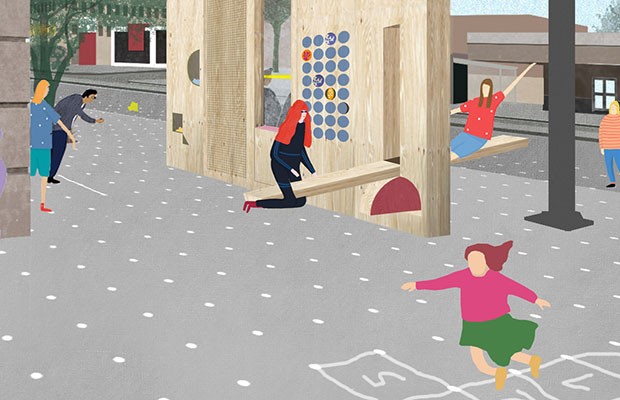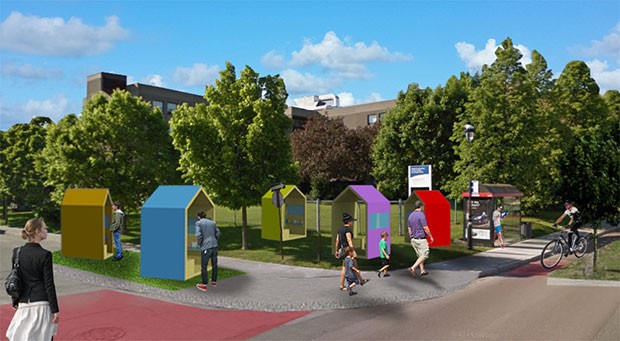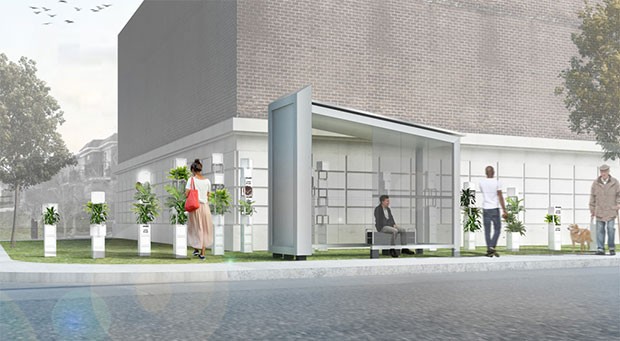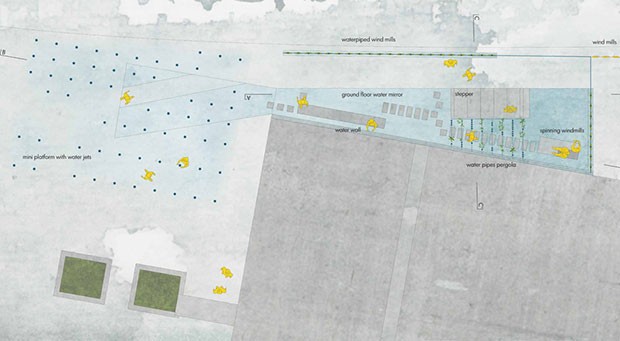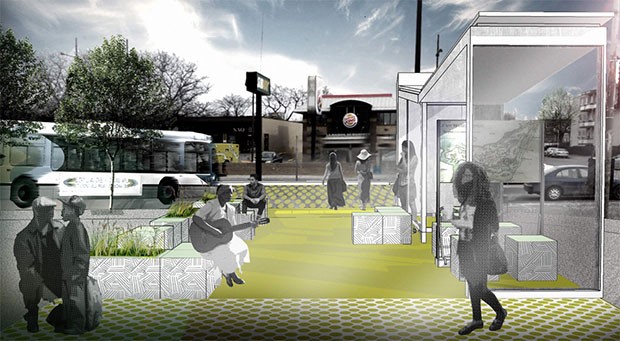It seems that everyone wants to make waiting for the bus a greener, more enjoyable experience because the response to a Concordia-Université de Montréal competition called More Than Waiting For The Bus has been overwhelming.
72 teams from more than 20 countries looked for creative ways to redesign public spaces around bus stops and heighten public awareness aroound climate change awareness. Four winners and ten honourable mentions were announced April 19th from a competitive field of 200 registered teams and 96 submitted projects.
Two honorary mentions were awarded to teams from Concordia's Design program.
The competition was run jointly by Associate Professor Carmela Cucuzzella’s Concordia University Chair of Integrated Design, Ecology, and Sustainability for the Built Environment (ideas-be ) and the Dr. Jean-Pierre Chupin’s Chaire de recherche sur les concours et les pratiques contemporaines en architecture de l’Université de Montréal. Associate Professor Zachary Patterson, a Canada Research Chair in Transportation and Land Use Linkages for Regional Sustainability at Concordia, as a juror.
The competition looked at four bus stops situated on Sherbrooke Street East in Montreal. It was open to recent students and graduates in the fields of architecture, design, landscape or urban design.
“We were looking for approaches that can help invigorate bus stop spaces in interactive, poetic, critical and meaningful ways. We wanted to make waiting for the bus more pleasant, to encourage people to use the bus rather than their car,” says Cucuzzella, who co-organized the competition.
But the goal wasn’t just to make a better bus stop. The competition looked for environmentally engaging designs and principles that could be adopted for future implementation in collaboration with the City of Montreal, the STM and private landowners. Organizers will also create a Guide to Best Practices which summarizes the principles submitted by each competing team.
This 2017 edition was done in collaboration with Conseil régional de l’environnement de Montréal (CRE-Montreal), an organization that focuses on the environmental protection and the promotion of sustainable development for the island of Montreal.
Each of the four winning teams receive $1500. Here are their designs:
